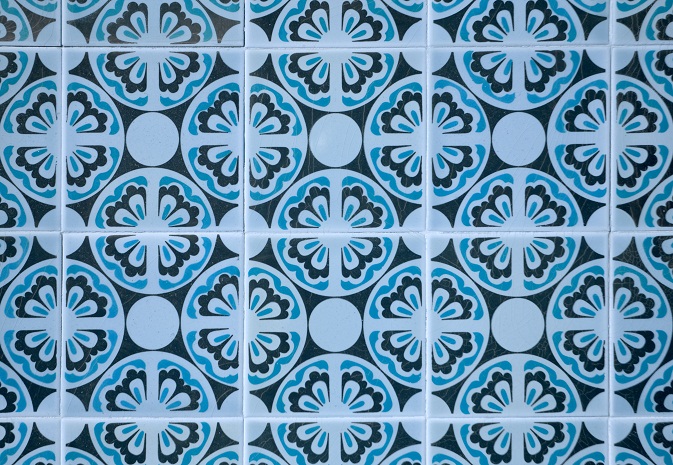Hand painted Portuguese tiles (azulejos) are virtually unmatched by painted tiles from anywhere else on earth. To find out if they are suitable for your home read on for more facts & information…
Since the 15th century Portugal has produced fine examples of this art form. These tiles have come to exemplify the culture of Portugal and highlight certain aspects of the Portuguese national character. Azulejos are seen everywhere across the land: on the inside and outside of churches, palaces, ordinary houses and train stations or bus stations.
The Portuguese did not invent glazed tiles for decorative or any other purpose. Credit for that must most likely go to Ancient Egypt. Some might argue that, more than any other nation, however, the Portuguese have perfected the art over five centuries of development. By the 18th century hand-painted Portuguese tiles were unmatched by any other nation in Europe in quantity, quality or variety.
Although the word azulejos is derived from the Arabic word az-zulayj, meaning “polished stone”, in a real sense, only the word survives as regards any persistent Moorish influence on the hand painted Portuguese tiles that were produced over the last 400 years. Initially this may well have been in evidence. Any residual influence travelled along with the word through Spain some time after the re-conquest of Spain by Christian forces.
It is reputed that King Manuel I of Portugal who reigned from 1469 to 1521 was so awestricken by the tiles he viewed at Alhambra in Granada (Spain) that he became determined to adorn his own palace in Sintra with ceramic tiles similar to the ones that had impressed him so. It should be acknowledged that in keeping with Islamic strictures no human figures were portrayed on these tiles that were imported from the city of Seville.
The revivified influence of the church on the Iberian Peninsula resulted in such prohibitions falling by the wayside and humans, creatures and saints alike began to replace the decorative patterns on Portuguese hand-painted tiles in fairly short order.
Post-Gothic architecture in Portugal produced buildings with large, flat areas covered by plaster that cried out for further decorations. Hand-painted Portuguese tiles were perfectly suited to fill that need. Where Italy had its frescoes, Portugal had its hand-painted tiles.
Color schemes began to become standardized as well. By the 17th century blue, yellow, green and white were being replaced by just white and blue. The speculation regarding this change is that the Age of Discovery and Exploration had brought the sublime Ming Dynasty vases and other ceramic creations to the attention of Portuguese artisans.
Lisbon’s museums are and excellent jumping off point for anyone wishing to trace the beautiful blue and white path that hand painted Portuguese tiles have built over that half-millennium.
The work of contemporary artisans can be viewed in Lisbon’s Metro stations and public buildings or purchased in many marketplaces that dot the city. It’s likely that wherever they may be these tiles (like their antecedents) will gracefully stand the test of time.





